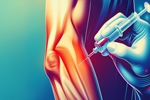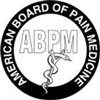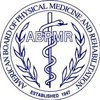
Elbow pain, whether from conditions like tennis elbow or golfer’s elbow, can be a debilitating issue that interferes with everyday tasks—from lifting a coffee cup to typing on a keyboard. While many people benefit from rest, physical therapy, or bracing, others may require more targeted intervention. Cortisone injections are one such option that can offer powerful relief, especially when other treatments fall short. In this article, we explore how cortisone injections work, when they're recommended, and how they fit into a comprehensive pain management plan for elbow conditions.
What Are Cortisone Injections?
Cortisone injections—also known as corticosteroid injections—are anti-inflammatory medications delivered directly into an affected area. In the context of elbow pain, cortisone is typically injected into the tendons or surrounding tissues involved in tennis elbow (lateral epicondylitis) or golfer’s elbow (medial epicondylitis).
These injections are designed to reduce inflammation and alleviate pain quickly. They’re often used in cases where conservative treatments such as NSAIDs, physical therapy, or rest have not provided adequate relief.
How Cortisone Injections Help Elbow Pain
- Rapid Inflammation Control
One of the key benefits of cortisone injections is their ability to control inflammation quickly. In elbow conditions, inflammation is often responsible for pain, swelling, and reduced range of motion. By reducing the inflammatory response in the tendons, cortisone helps patients experience noticeable relief—often within just a few days.
- Improved Function and Mobility
When pain is reduced, patients are better able to participate in physical therapy or engage in daily activities. This is especially important in conditions like tennis or golfer’s elbow, where muscle weakness and joint stiffness can become worse without movement.
- Targeted Delivery
Unlike oral medications, cortisone injections deliver medication precisely to the site of inflammation, increasing the effectiveness while reducing systemic side effects. This localized approach makes them particularly useful in managing elbow-related tendonitis.
When Are Cortisone Injections Used?
Cortisone injections are usually considered when:
- Conservative treatments (rest, bracing, physical therapy, NSAIDs) haven’t worked.
- The pain is interfering with work or daily life.
- There's significant inflammation detected on imaging or physical exam.
However, repeated injections over time are not typically advised, as they may weaken tendons or delay natural healing if overused.
Limitations and Considerations
While cortisone injections can be effective, they’re not always a long-term solution. Recent research suggests that although cortisone offers rapid relief, it may not promote healing—and in some cases, might even delay tendon recovery when used repeatedly. That’s why physicians often use them as part of a broader interventional strategy, not as a standalone cure.
Alternatives to Cortisone Injections
For patients looking for regenerative or longer-term healing solutions, options like Platelet-Rich Plasma (PRP) therapy or ultrasound-guided tenotomy may be explored:
- PRP Therapy uses your body’s own platelets to stimulate tendon healing and tissue repair.
- Extracorporeal Shock Wave Therapy (ESWT) stimulates blood flow and tissue regeneration.
- Ultrasound-Guided Procedures provide precision in treating damaged tissue with minimal invasiveness.
These alternatives are especially useful for chronic conditions or when cortisone injections are no longer effective.
Conclusion
Cortisone injections are a valuable tool in the management of elbow pain, particularly when inflammation is a major factor. While they provide fast-acting relief and improve function in the short term, they are most effective when combined with a comprehensive treatment plan that includes physical therapy, activity modification, and other interventional techniques.
At Precision Pain Care and Rehabilitation, we evaluate each patient individually to determine the most appropriate treatment path—whether that includes cortisone injections, PRP, or other advanced therapies. Our goal is not just symptom relief but lasting recovery and restored quality of life.
Precision Pain Care and Rehabilitation has two convenient locations in Richmond Hill – Queens, and New Hyde Park – Long Island. Call the Queens office at (718) 215-1888 or (516) 419-4480 for the Long Island office to arrange an appointment with our Interventional Pain Management Specialists, Dr. Jeffrey Chacko or Dr. Sonny Ahluwalia.
Note: This article is for informational purposes only and should not be considered medical advice. Consult a healthcare professional for personalized recommendations.















